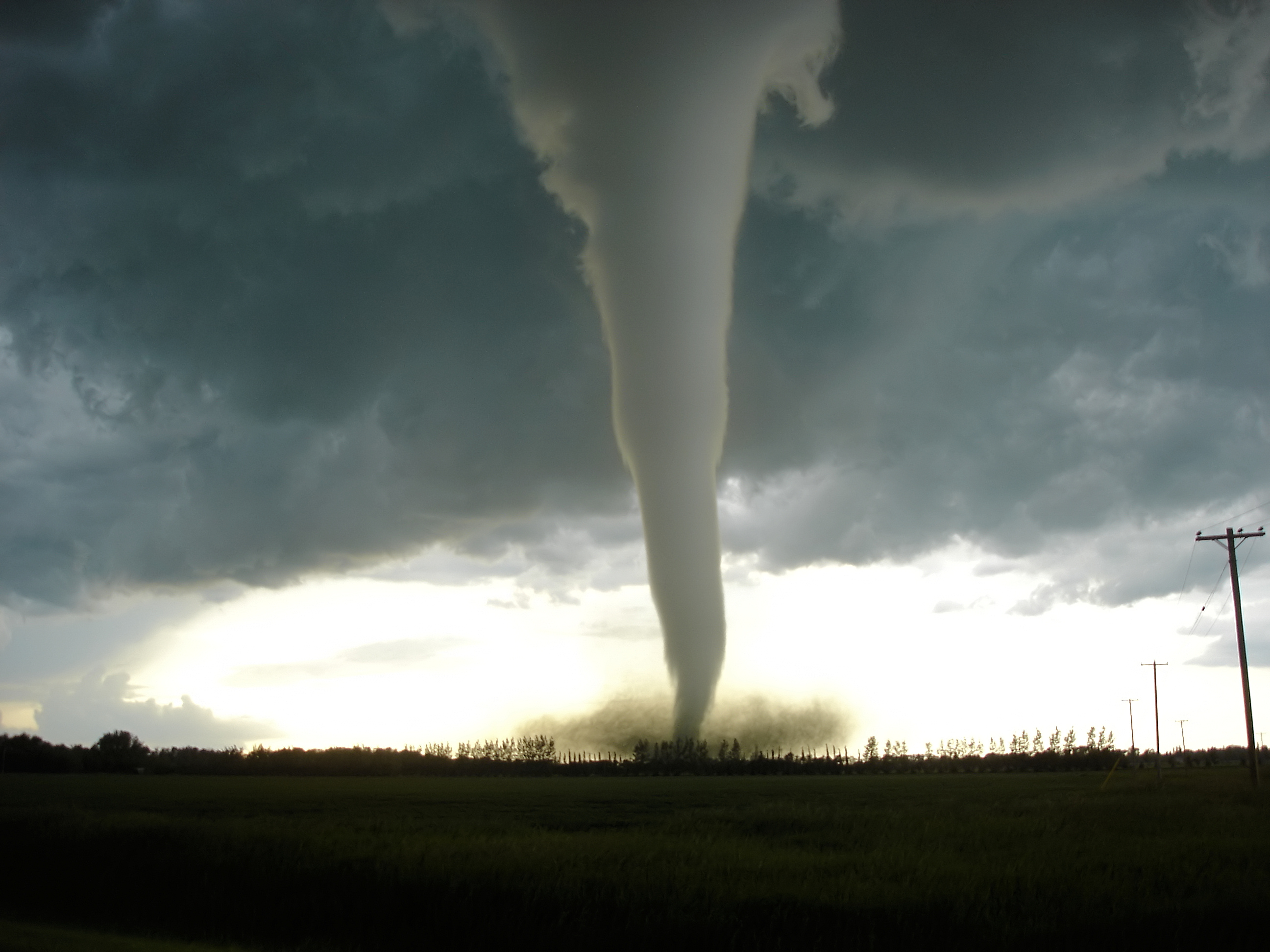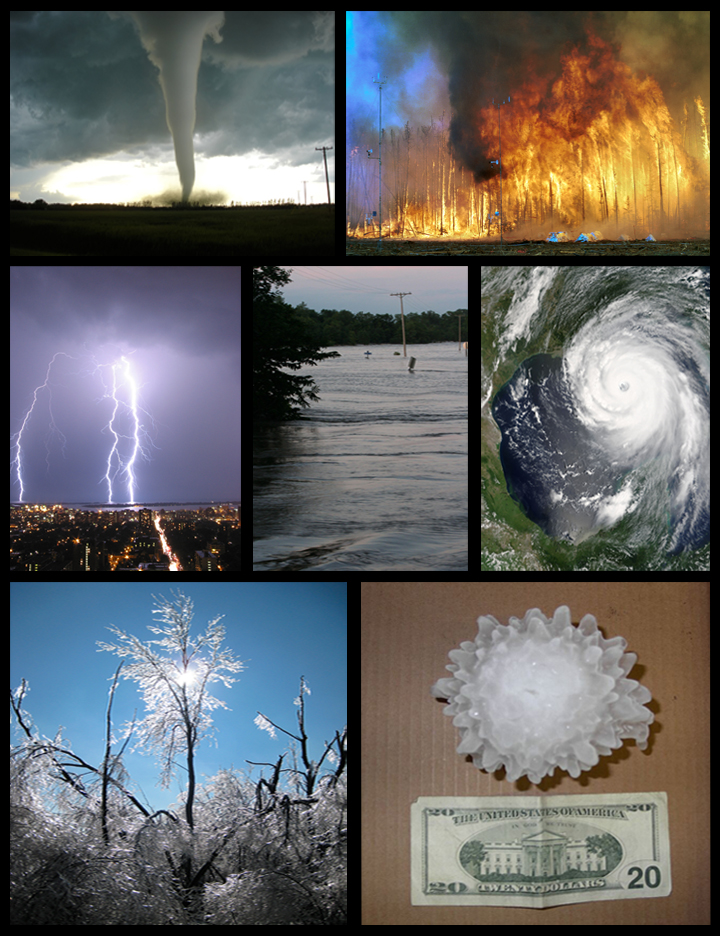|
Local Storm Report
A Local Storm Report (LSR) is transmitted by the National Weather Service (NWS) when it receives significant information from storm spotters, such as amateur radio operators, storm chasers, law enforcement officials, civil defense (now emergency management) personnel, firefighters, EMTs or public citizens, about severe weather conditions in their warning responsibility area (County Warning Area or CWA). Those reports are received by local National Weather Service offices (WFOs), and they can be used to issue Severe Thunderstorm Warnings, Tornado Warnings, and other weather warnings/bulletins, in addition to the LSR. The Storm Prediction Center, working with the NWS WFOs, collects these reports for its own database, and it also works with the National Climatic Data Center, which eventually stores the reports in the official record, which is called ''Storm Data''. Example The following is an example of a stand-alone LSR that has one individual report from a SKYWARN spotter: ... [...More Info...] [...Related Items...] OR: [Wikipedia] [Google] [Baidu] |
National Weather Service
The National Weather Service (NWS) is an Government agency, agency of the Federal government of the United States, United States federal government that is tasked with providing weather forecasts, warnings of hazardous weather, and other weather-related products to organizations and the public for the purposes of protection, safety, and general information. It is a part of the National Oceanic and Atmospheric Administration (NOAA) branch of the United States Department of Commerce, Department of Commerce, and is headquartered in Silver Spring, Maryland, Silver Spring, Maryland, within the Washington metropolitan area. The agency was known as the United States Weather Bureau from 1890 until it adopted its current name in 1970. The NWS performs its primary task through a collection of national and regional centers, and 122 local List of National Weather Service Weather Forecast Offices, Weather Forecast Offices (WFOs). As the NWS is an agency of the U.S. federal government, most o ... [...More Info...] [...Related Items...] OR: [Wikipedia] [Google] [Baidu] |
Severe Thunderstorm Warning
A severe thunderstorm warning ( SAME code: SVR) is a severe weather warning product issued by regional offices of weather forecasting agencies throughout the world to alert the public that severe thunderstorms are imminent or occurring. A severe thunderstorm warning is issued when Doppler weather radar, trained storm spotters or local emergency management personnel indicate that a thunderstorm is producing large hail and high winds capable of causing significant damage, and is expected to continue producing severe weather along the storm's projected track. Flooding is also sometimes caused by torrential rainfall produced by a thunderstorm. (In these cases, a flood advisory or flash flood warning may be issued to alert the public of the flooding threat.) Definition A severe thunderstorm warning indicates the warned area is in impending danger from hail or wind speeds meeting warning criteria as well as from lightning and hydrological impacts associated with the storm ce ... [...More Info...] [...Related Items...] OR: [Wikipedia] [Google] [Baidu] |
Emergency Communication
An emergency is an urgent, unexpected, and usually dangerous situation that poses an immediate risk to health, life, property, or environment and requires immediate action. Most emergencies require urgent intervention to prevent a worsening of the situation, although in some situations, mitigation may not be possible and agencies may only be able to offer palliative care for the aftermath. While some emergencies are self-evident (such as a natural disaster that threatens many lives), many smaller incidents require that an observer (or affected party) decide whether it qualifies as an emergency. The precise definition of an emergency, the agencies involved and the procedures used, vary by jurisdiction, and this is usually set by the government, whose agencies (emergency services) are responsible for emergency planning and management. Defining an emergency An incident, to be an emergency, conforms to one or more of the following, if it: * Poses an immediate threat to life, hea ... [...More Info...] [...Related Items...] OR: [Wikipedia] [Google] [Baidu] |
Severe Weather Terminology (United States)
This article describes severe weather terminology used by the National Weather Service (NWS) in the United States. The NWS, a government agency operating as an arm of the National Oceanic and Atmospheric Administration (NOAA) branch of the United States Department of Commerce (DoC), defines precise meanings for nearly all of its weather terms. This article describes NWS terminology and related weather scales used by the agency. Some terms may be specific to certain cities or regions. Specific Area Message Encoding (SAME) product codes assigned to each term for NOAA Weather Radio (NWR) broadcasts are included in parentheses following the title of the described alert type if used; products that do not have a specified code are identified where applicable as Non-Precipitation Warnings/Watches/Advisories (NPW), Coastal Flood Warnings/Watches/Advisories (CFW), Marine Weather Statement (MWS), Surf Discussion (SRD) or Winter Weather Warnings/Watches/Advisories (WSW) as defined by NOAA. D ... [...More Info...] [...Related Items...] OR: [Wikipedia] [Google] [Baidu] |
News Media
The news media or news industry are forms of mass media that focus on delivering news to the general public or a target public. These include news agencies, print media (newspapers, news magazines), broadcast news (radio and television), and the internet (online newspapers, online news magazines, news websites etc.). History Some of the first news circulations occurred in Renaissance Europe. These handwritten newsletters contained news about wars, economic conditions, and social customs and were circulated among merchants. The first printed news appeared by the late 1400s in German pamphlets that contained content that was often highly sensationalized. The first newspaper written in English was ''The Weekly Newes,'' published in London in 1621. Several papers followed in the 1640s and 1650s. In 1690, the first American newspaper was published by Richard Pierce and Benjamin Harris in Boston. However, it did not have permission from the government to be published and was immedia ... [...More Info...] [...Related Items...] OR: [Wikipedia] [Google] [Baidu] |
SKYWARN
Skywarn (sometimes stylized as SKYWARN) is a program of the National Weather Service (NWS). Its mission is to collect reports of localized severe weather in the United States. These reports are used to aid forecasters in issuing and verifying severe weather watches and warnings and to improve the forecasting and warning processes and the tools used to collect meteorological data. Reports are also used by local emergency managers and public safety organizations. Skywarn consists of a network of severe storm spotters who observe weather conditions and make reports of severe weather to their local NWS offices. These spotters are regularly trained by personnel from the local NWS offices. In many areas, classes are conducted each spring in advance of the coming severe weather season. Many SKYWARN spotters use methods to communicate with one another during severe storm events. A notable example of this is through the use of amateur radio nets, which is still an important method since s ... [...More Info...] [...Related Items...] OR: [Wikipedia] [Google] [Baidu] |
National Climatic Data Center
The United States National Climatic Data Center (NCDC), previously known as the National Weather Records Center (NWRC), in Asheville, North Carolina, was the world's largest active archive of weather data. Starting as a tabulation unit in New Orleans, Louisiana in 1934, the climate records were transferred to Asheville in 1951, becoming named the National Weather Records Center (NWRC). It was later renamed the National Climatic Data Center, with relocation occurring in 1993. In 2015, it was merged with the National Geophysical Data Center (NGDC) and the National Oceanic Data Center (NODC) into the National Centers for Environmental Information (NCEI). History In 1934, a tabulation unit was established in New Orleans, Louisiana to process past weather records. Climate records and upper air observations were punched onto cards in 1936. This organization was transferred to Asheville, North Carolina in 1951, where the National Weather Records Center (NWRC) was established. It w ... [...More Info...] [...Related Items...] OR: [Wikipedia] [Google] [Baidu] |
Storm Prediction Center
The Storm Prediction Center (SPC) is a US government agency A government or state agency, sometimes an appointed commission, is a permanent or semi-permanent organization in the machinery of government that is responsible for the oversight and administration of specific functions, such as an administrati ... that is part of the National Centers for Environmental Prediction (NCEP), operating under the control of the National Weather Service (NWS), which in turn is part of the National Oceanic and Atmospheric Administration (NOAA) of the United States Department of Commerce (DoC). Headquartered at the National Weather Center in Norman, Oklahoma, Norman, Oklahoma, the Storm Prediction Center is tasked with forecasting the risk of severe thunderstorms and tornadoes in the contiguous United States. It issues #Convective outlooks, convective outlooks, #Mesoscale discussions, mesoscale discussions, and #Weather watches, watches as a part of this process. Convective outlooks are issu ... [...More Info...] [...Related Items...] OR: [Wikipedia] [Google] [Baidu] |
Tornado Warning
A tornado warning ( SAME code: TOR) is a severe weather warning product issued by regional offices of weather forecasting agencies throughout the world to alert the public when a tornado has been reported or indicated by weather radar within the parent severe thunderstorm. It can be issued after a tornado, funnel cloud and rotation in the clouds has been witnessed by the public, storm chasers, emergency management or law enforcement, and indicates that residents in the affected areas should take immediate safety precautions. A warning should not be confused with a tornado watch, issued in the United States by the Storm Prediction Center (SPC) and in other countries by applicable regional forecasting agencies or national severe weather guidance centers, which only indicates that conditions are favorable for the formation of tornadoes. Although a tornado warning is generally a higher alert level than a tornado watch, in the U.S., it can be surpassed by a higher-level alert—struct ... [...More Info...] [...Related Items...] OR: [Wikipedia] [Google] [Baidu] |
County Warning Area
A forecast region is a unique geographical area for which individual weather reports are issued. Canada In Canada, the Meteorological Service divides the country into several forecast regions for the purpose of issuing routine text forecasts and weather warnings, as Canada's provinces and territories do not use a common second-level administrative division scheme similar to the division of states into counties and parishes in the United States. Due to the localized nature of some weather phenomena, such as freezing rain storms and tornadoes, some forecast regions that have been found to be more prone to such phenomena are further divided into sub-regions, especially in the Prairie provinces. Parts of Northern British Columbia, Northern Quebec, Labrador, and the territories do not belong to any forecast region, owing to the lack of any significant population in those areas. With the implementation of Specific Area Message Encoding into the Weatheradio Canada service in 2007, eac ... [...More Info...] [...Related Items...] OR: [Wikipedia] [Google] [Baidu] |
Storm Spotter
Storm spotting is a form of weather spotting in which observers watch for the approach of severe weather, monitor its development and progression, and actively relay their findings to local authorities. History Storm spotting developed in the United States during the early 1940s. A joint project between the military and the weather bureau saw the deployment of trained military and aviation lightning spotters in areas where ammunitions for the war were manufactured. During 1942, a serious tornado struck a key operations center in Oklahoma and another tornado on May 15, 1943 destroyed parts of the Fort Riley military base located in Kansas. After these two events and a string of other tornado outbreaks, spotter networks became commonplace, and it is estimated that there were over 200 networks by 1945. Their mandate had also changed to include reporting all types of active or severe weather; this included giving snow depth and other reports during the winter as well as fire reports ... [...More Info...] [...Related Items...] OR: [Wikipedia] [Google] [Baidu] |
Severe Weather
Severe weather is any dangerous meteorological phenomenon with the potential to cause damage, serious social disruption, or loss of human life. Types of severe weather phenomena vary, depending on the latitude, altitude, topography, and atmospheric conditions. High winds, hail, excessive precipitation, and wildfires are forms and effects of severe weather, as are thunderstorms, downbursts, tornadoes, waterspouts, tropical cyclones, and extratropical cyclones. Regional and seasonal severe weather phenomena include blizzards (snowstorms), ice storms, and duststorms. Extreme weather phenomena which cause extreme heat, cold, wetness or drought often will bring severe weather events. One of the principal effects of anthropogenic climate change is changes in severe and extreme weather patterns. Terminology Meteorologists have generally defined severe weather as any aspect of the weather that poses risks to life, property or requires the intervention of authorities. A narrower ... [...More Info...] [...Related Items...] OR: [Wikipedia] [Google] [Baidu] |



.jpg)
%2C_FEB_2015.jpg)


